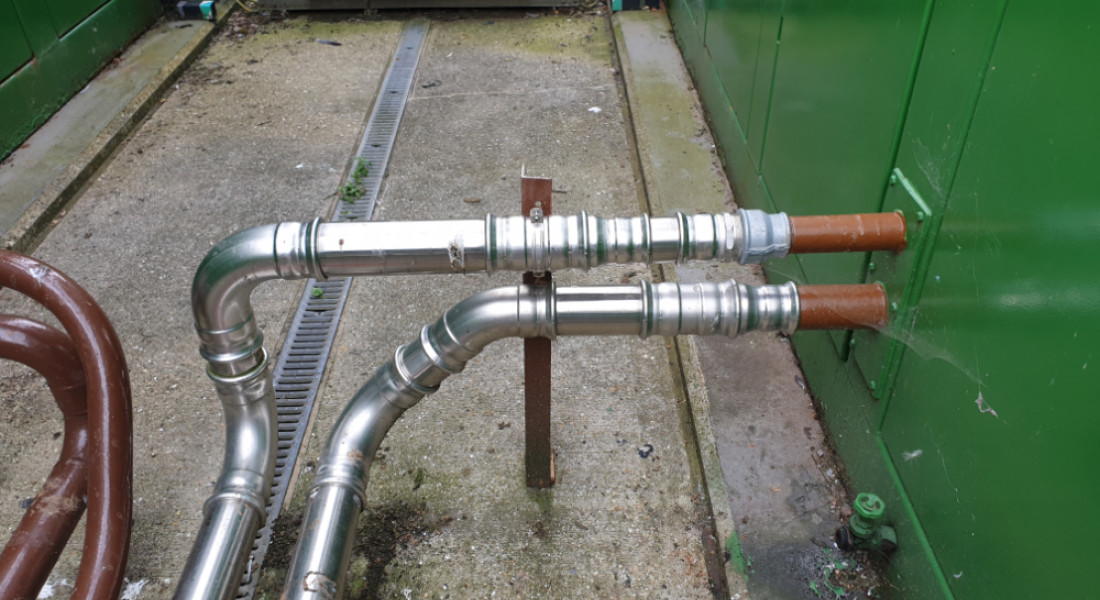Blog

An OFTEC Inspection from Dale ensures compliance with industry regulations and OFTEC-approved controls. An extensive inspection, it covers the following functions:
Tank Features
Taking its location, condition and construction into account, we also look at the type of oil used, its age and identification.
Condition of Pipework
From your gathering pipelines and your feeder pipelines through to your transmission pipelines and distribution pipelines, we look out for corrosion, cracks, environmental pressure and any potential damage from installation or excavation.
Corrosion, one of the most common causes of pipeline issues, can be of 3 types:
External Corrosion
Usually arising from external conditions of heat, water or pressure combined with contact with corrosive materials such as acidic soil.
Internal Corrosion
Resulting from the transportation of a corrosive or pressurised product.
Corrosion Defects
Due to physical characteristics such as pipeline shape or form, or from issues resulting from handling or installation.
An OFTEC inspection will cover all of this, as well as check weld integrity, look out for cracks and fractures in the pipelines, consider pipe alignment and wall thickness, and that everything is in working order.
Condition of Tank Supports and Base Quality
A visual check of the base and supports of the fuel storage tank for cracking and subsidence is very important. An uneven base, or incorrectly fitted base, could cause an oil tank to succumb to pressure, especially when full. This could lead to stretching and the formation of cracks and splits. We can check for all of this, and make recommendations on base types too.
Bund Compliance
Also known as ‘secondary containment’, a bund is an area around a tank and its ancillary equipment designed to contain any loss of oil and to prevent any environmental impact. A bund must hold at least 110% of the volume of oil the tank is designed to contain, with that extra 10% taking into account everything from sudden tank failures and leaks through to loss of the total tank contents, overfilling and containment of fire-fighting agents.
Bunds may also be impermeable to oil and water with no direct outlet such as a pipe, valve or other opening to drain the system.
Inspection of Gauges, Level Alarms and Fire Valves
For example, sight gauges will be checked that they:
Have a bracket along the length of the sight gauge tube that fixes the tube to the tank so that it can’t be knocked over.
Are fitted with a valve that closes automatically when the gauge is not in use.
Inspection of Associated Ancillary Equipment
If your fixed tank has a pump, we’ll check that:
Your pump has a valve in its feed line that prevents the tank contents emptying if there’s damage to the pump or feed line.
It’s positioned to reduce the risk of damage by impact – for example, away from tanker turning circles and fork lift truck routes.
It’s protected against oil theft – for example, by keeping the pump in a lockable cage.
Inspection of Overfill and Impact Protection
If the vent pipe of a fixed tank, and the tank itself, cannot be seen from where the tank is filled, we’ll check that an automatic overfill prevention device has been fitted to the tank. This may be a device that cuts off the flow of oil to the tank when it’s full, a sounding alarm or fixed tank probe that sends a signal to alert the person filling the tank when the tank is full.
Inspection of Fill Points, Draw Off Points and Vents
Fill pipes, draw off pipes and overflow pipes must be positioned in a location that minimises the risk of damage by impact – for example away from driveways, tanker turning circles, and fork lift truck routes.
Also, if you fill your tank or container through a remote pipe (i.e. you fill your container at a fill point that’s outside the bund/secondary containment), we’ll check that you’re using a drip tray to catch any oil that may be spilled during its delivery.
If your fixed tank has any vent pipes, taps or valves, we’ll also check:
That the vent pipes, taps or valves are within the valve.
They are arranged so that any oil coming out of them will go vertically down the bund.
That taps and valves have a lock and can be locked when not in use.
We will also discuss your processes and procedures for operation, filling and spill response, and ensure that environmental issues and fire issues are at the forefront of your business.